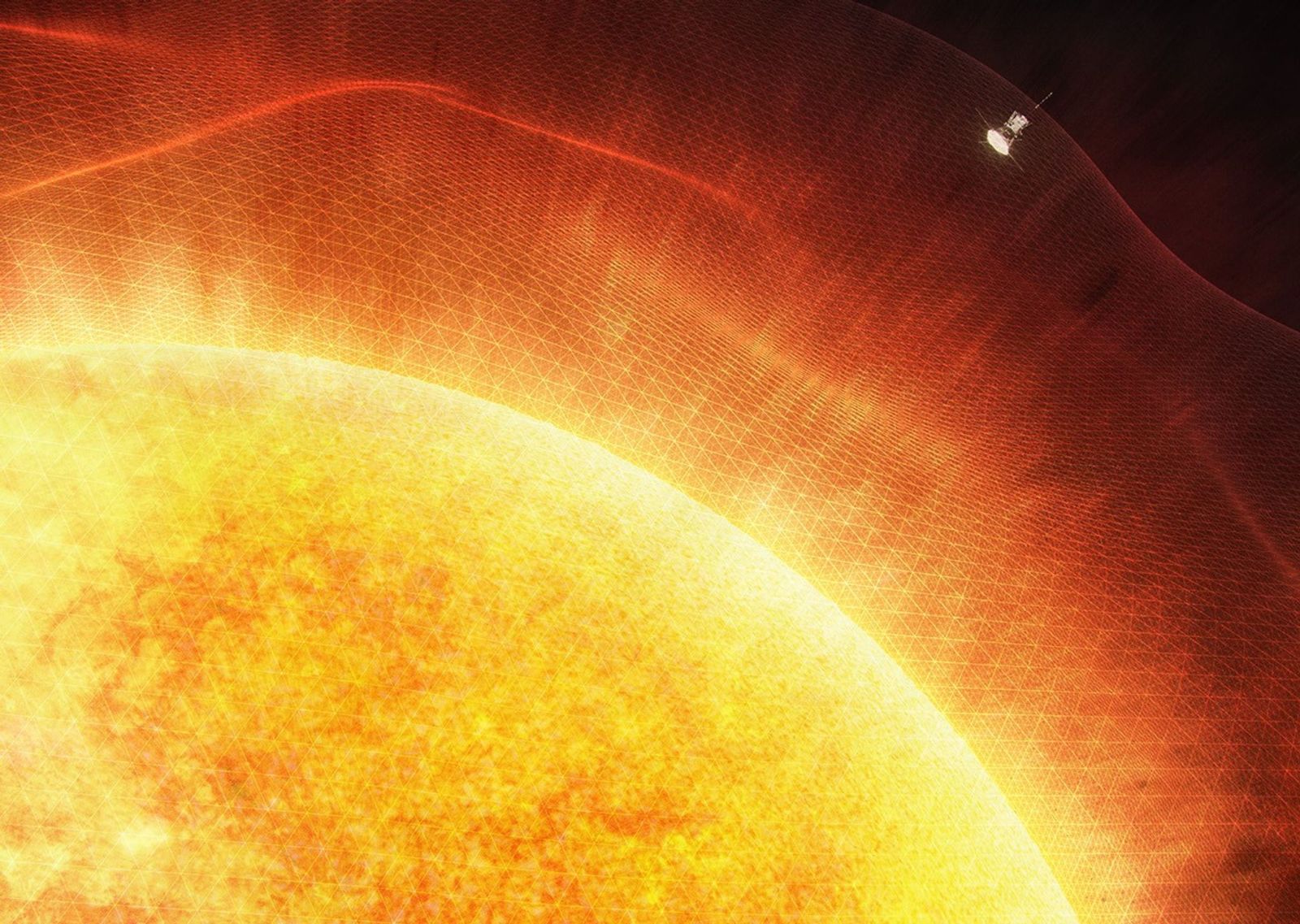Follow us on Google News (click on ☆)

This concept image shows the Parker probe about to enter the solar corona.
NASA/Johns Hopkins APL/Ben Smith
At just 3.8 million miles (6.1 million kilometers) from the Sun, the probe traversed the solar atmosphere at a record speed of 430,000 mph (692,000 km/h). A signal received on December 26 confirmed its proper functioning after this perilous maneuver. This mission offers a unique opportunity to study solar phenomena up close.
Nicky Fox, head of NASA's Science Mission Directorate, emphasizes the importance of this mission for understanding the Sun's influence on our solar system. The data collected could shed light on the mechanisms of stars and the search for habitable worlds.
Since its launch in 2018, the probe has used seven flybys of Venus to adjust its trajectory. Its current orbit, stabilized after a final flyby in November 2024, allows it to approach the Sun every three months. This configuration optimizes data collection while protecting the instruments from extreme heat.
Nour Rawafi, project scientist, describes this mission as a new era for space exploration. The probe faces extreme conditions to unravel the mysteries of the Sun, particularly the temperature of the corona, which exceeds one million degrees Celsius.
A carbon foam shield protects the probe from temperatures reaching nearly 1000 degrees Celsius. Designed to withstand extreme conditions, it keeps the instruments at a stable temperature. This technology has made possible a mission long considered unfeasible.
The successive orbits of the Parker Solar Probe gradually bringing it closer to the Sun.
Credit: NASA
Credit: NASA
The measurements taken by the probe allow for the study of solar wind acceleration and the formation of energetic particles. These data are crucial for understanding the physical processes in the solar corona. Previous discoveries have already revolutionized our understanding of the Sun.
Kelly Korreck, a NASA scientist, highlights the importance of the collected data for the scientific community. The probe has revealed unexpected structures in the corona and identified the origin of "switchbacks," disturbances in the solar wind.
The probe has also contributed to the study of coronal mass ejections and solar energetic particles. Its flybys of Venus have allowed for the observation of the planet's natural radio emissions and its orbital dust ring. These discoveries enrich our knowledge of the inner solar system.
The next close approaches are scheduled for March and June 2025. These maneuvers will allow for the collection of even more precise data on solar processes.
What is the solar corona?
The solar corona is the outer layer of the Sun's atmosphere. It extends millions of miles (millions of kilometers) into space and is visible during solar eclipses. Unlike the Sun's surface, its temperature exceeds one million degrees Celsius.
This region is the site of intense phenomena, such as coronal mass ejections and the solar wind. Scientists study the corona to understand why it is much hotter than the Sun's surface. The Parker Solar Probe mission provides valuable data on this subject.
The corona plays a crucial role in the Sun's influence on the solar system. It generates the solar wind, a stream of charged particles that interacts with the planets. Understanding this region helps predict the impacts of solar storms on Earth.
Observations of the corona reveal dynamic structures, such as coronal loops and coronal holes. These elements are essential for studying solar magnetic fields.